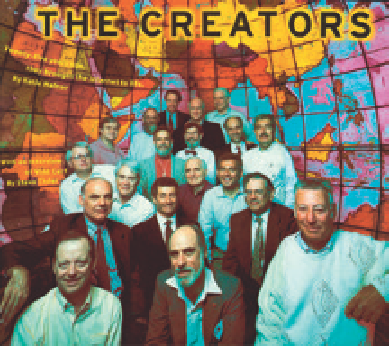Information Technology Reference
In-Depth Information
Fig. 10.19. An Internet map in 2005
generated by tracing the packets from
source to destination.
1980s, TCP/IP-based computer networking grew rapidly in universities. In the
end, TCP/IP won out, showing that an open, grassroots process can sometimes
prevail over an imposed official standard.
The Internet soon became much more than a research experiment for aca-
demic researchers (
B.10.18
). By the time the ARPANET was retired in 1990, com-
mercial
Internet service providers
(ISPs) had begun to emerge, allowing business
and the general public to connect to the Internet, usually for a monthly fee.
For many years, the U.S. government, which funded ARPANET and its succes-
sor NSFNET, had tried to limit the Internet to research and educational uses. In
1995, however, the government removed the last restrictions on commercial
use of the Internet. Traffic on the public Internet grew at more than 100 percent
per year through the late 1990s. As of March 2011, the number of Internet users
exceeded two billion, some 30 percent of the world's population (
Fig. 10.19
).
From copper to glass
The chapter began with an account of Chappe's early optical communica-
tion system, and it now ends with a discussion of how lasers and optical fibers
B.10.18. A group photo of Internet pioneers taken in 1994 to mark the twenty-fifth
anniversary of the ARPANET. The photo was taken at a Christian Science Church in
Boston in front of their world map. Left to right, front row: Bob Taylor, Vint Cerf, and
Frank Heart; second row: Larry Roberts, Len Kleinrock, and Bob Kahn; third row: Wes
Clark, Doug Engelbart, and Barry Wessler; fourth row: Dave Walden, Severo Ornstein,
Truett Thach, Roger Scantlebury, and Charlie Herzfeld; fifth row: Ben Barker, Jon Postel,
and Steve Crocker; last row: Bill Naylor and Roland Bryan.


Search WWH ::

Custom Search